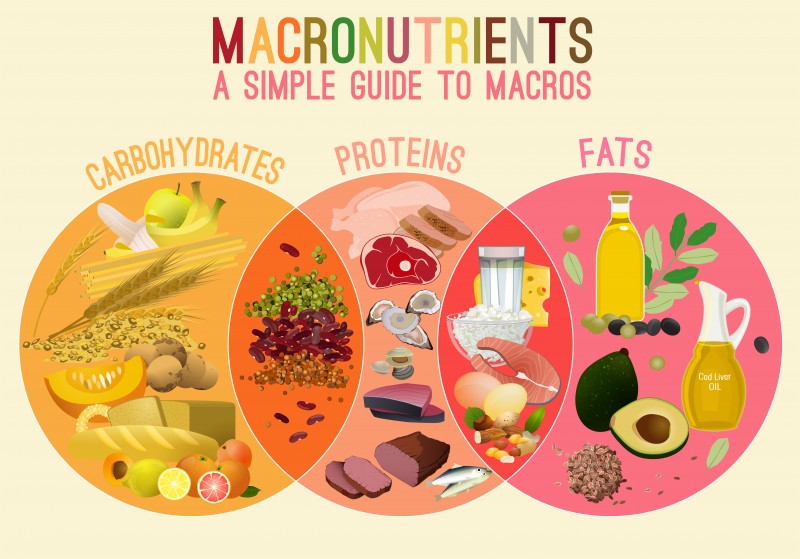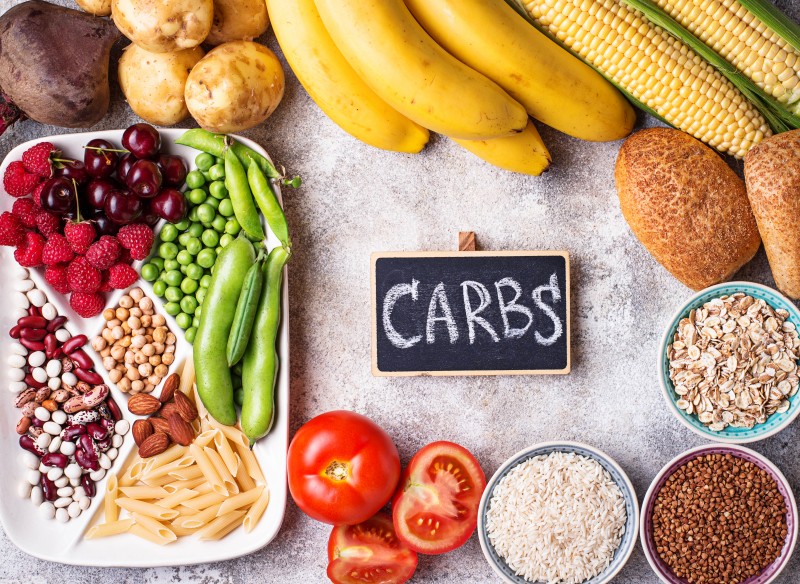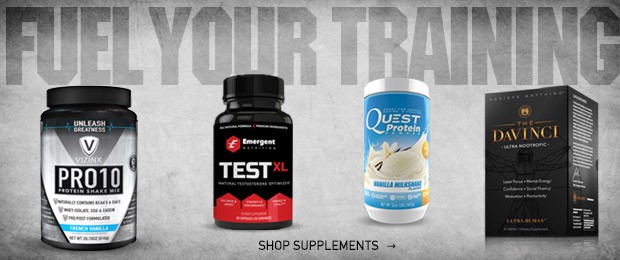
My take on nutrition for most people is quite simple.
Base your diet around real food—foods that are single ingredient, or earth-grown.
Some of these foods are dense in protein, some in carbs, and some in fat. Proteins, carbs, and fats are the three macronutrients that the foods you eat make up.
The vitamins and minerals that your foods consist of are called micronutrients.
These micronutrients are imperative for your health and body functions. The earth-grown foods that I mentioned earlier are dense in micronutrients.
Since the average person does not consume enough of these nutrient-dense foods, nutrient deficiencies are much more common than they should be. That’s why my approach as a nutrition coach is to help my clients improve food quality first, and get them used to eating enough of the foods that will help improve some of these deficiencies.
RECENT: Understanding Energy Systems for Freak Conditioning
That step alone won’t only enhance a person’s health and balance out a deficiency, but it will simultaneously help them lose body fat and build lean muscle mass. That’s because the average person consumes mostly processed foods (and beverages) that are dense in calories rather than nutrients.
These processed foods easily put us into a calorie surplus; without the vital nutrients needed to optimize or even sustain our health.

annyart © 123rf.com
In my approach, once a client masters food quality and making good food choices, then it’s time to take a closer look into the macronutrients I mentioned earlier.
The average person who has already made these adjustments and mastered them usually has made significant strides towards their body composition goals. They got leaner, added more muscle and energy improved. More often than not, these people also see a drastic improvement in blood work as well.
For most, this step may be the only one they need to take.
However, even after taking this vital step, some people want to make even more strides towards a specific body composition goal. These are people who are typically active and train hard. They usually want to bring their body fat down to single digits, and the problem they often face at this point is not eating enough food.
Typically, these active guys and gals don’t eat enough protein, fat, or carbohydrate to achieve their body composition goals. So, the next step is to map out how many total calories they need to consume to achieve their fat loss goal.
Let’s run through one quick example of how this can be done.
These numbers are just rough estimates, but they’ll help you get the idea. To achieve fat loss, active guys can take their bodyweight x 12, and women can do bodyweight x 10 to find their total caloric intake. These numbers will help keep them in a calorie deficit but is often still an increase in the total calories they were previously consuming.
Use this example: A 200-pound man would take 200 x 12 totaling 2,400 calories per day.
One gram of protein is worth four calories, one gram of carbohydrate is worth four calories, and one gram of fat is worth nine calories.
Most active, relatively lean people will need about one gram of protein per pound of body weight per day. In this case, 200 grams.
200 x 4 equals 800 calories per day from protein alone.
Total fat can be found by bodyweight x .5.
200 x .5 equals 100 grams of fat per day.
100 grams x 9 calories equals 900 calories per day from fat.
That’s 1,700 calories per day from protein and fat alone, so now we can find the total number of carbohydrates.
2,400 (total daily calories) minus 1,700 (calories from protein and fat) equals 700 calories are needed from carbohydrates.
Carbs are four calories per gram, so 700 divided by 4 calories equals 175 grams of carbs per day.
So, in this example, for a 200 pound, active, relatively lean dude, he would start at 200 grams protein, 175 grams carbohydrate, and 100 grams fat per day.
Dang, that was a lot of math. But don’t worry, there are other ways to find these numbers by simply taking a percentage of each macronutrient. I just wanted you to see this formula, so you don’t become too obsessed with percentages, but we’ll save that for another time.
Once you get these numbers dialed in, odds are, you’re going to start seeing fat pour off again.
As you can see from this article, nutrition is not a one-size-fits-all approach. Not everyone can handle tracking calories and macronutrients, nor do they need to. And not everyone will use the same macro breakdown.
Most people are satisfied with the results they see from simply adjusting food quality alone.
Others want to see more drastic results, so a specific macro breakdown is necessary IF they are ready and can handle these adjustments as well as the work that goes into tracking it.
Once these adjustments are made, you may see another plateau in time. For those who want to get even leaner (or need to for sport), then another adjustment can be made.

yuliaff © 123rf.com
This adjustment I want to discuss with you today is called carb cycling.
It’s important that before going forward, I explain that this is a short term intervention and should only be done to achieve a specific goal for those who are extremely advanced with their nutrition. Following a strict carb cycle for too long can create imbalances, which can then lead to physiological issues. You don’t want that, so set a deadline of 6, 10, 12, or 16 weeks THE MOST. The duration will be determined by the specific outcome you want and what it will take for you to get there.
Once your carb cycle is complete, it’s essential to get back to your baseline level of eating earth-grown foods, without the rigid restriction and manipulation of calories. For your baseline, simply eat until you’re satisfied.
Training hard and keeping carbohydrate intake low for extended periods can cause problems. One of the byproducts of these problems is a fat loss plateau—this happens because the body shuts down all processes that aren’t required to survive.
Hard dieting and training for extended periods can lead to the slowing of your metabolic rate, testosterone, and estrogen production coming to a screeching halt, thyroid function disruption, and disruption of your nervous system.
None of which is good for fat loss or, more importantly, your health.
That’s where carb cycling can come in handy.
Cycling carbs (or calories in general) can help us prevent hormonal and metabolic shut down while keeping the fat loss process going.
Rather than giving you another formula, here’s where you can start.
Use the same formula above for fat loss and find your total calories for what we’ll call your “low carb” day. In the example above, carb intake was 175 grams per day.
RELATED: A Full Day of Eating With Ben Pollack
Follow that exact breakdown for three days. On the fourth day, simply double your carbohydrates. In this example, that would mean 350 grams on your “high carb” day. All other macros can stay the same.
When your high carb day is over, go right back to your “low carb” day for the next three days, followed by another high carb day on the fourth day. Keep repeating this cycle for the prescribed duration of your carb cycle plan.
If you don’t notice a difference in fat loss (which shouldn’t be more than one pound per week at this point), then you may want to make an adjustment and reduce carb intake by a very small amount on both low and high days and see how you feel.
It’s also important for you to remember that every human being is different. Some people do better with higher fat/lower carb, some do better with higher carb/lower fat…it all depends. The numbers in the example given in this article might not be the right numbers for you. There are so many variables involved, and it will take some trial and error to determine what works best for you.
Just keep in mind that at the end of the day, to enhance your health and body composition, the quality of your food matters most. Simply following a formula to figure out your macros is not ideal. Sure, you can achieve fat loss with that approach, but your health will not be optimized.
Get the quality of foods you consume in check first, and then you can progress to more advanced strategies given in this article if need be.
I hope this article helps. If you’d like to learn more about working with me in my nutrition coaching program, or have any other questions for me, head over to leansobproject.com and fill out an application.
Thanks for reading.











1 Comment